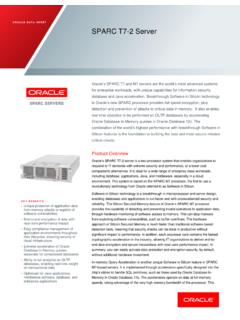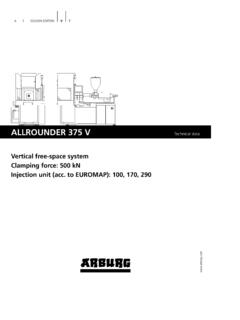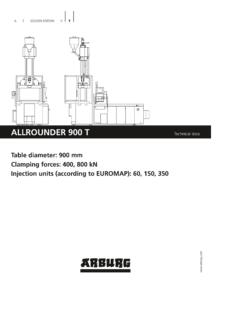Transcription of A Comparison of MPEG4 (H.264) and JPEG2000 Video ...
1 P a g e 1c w c e m b e d d e d . c o mT e c h n o l o g y W h i t e P a p e rA Comparison of MPEG4 ( ) and JPEG2000 Video compression and decompression AlgorithmsIntroductionIn the past decade digital Video recording and distribution has been made much more viable by the introduction of new Video compression and decompression techniques. Analog Video applications have traditionally typically needed large investments in infrastructure to be able to provide any useful recording and distribution functionality (even at very low channel counts), even with the older generation of standard definition (SD) PAL/NTSC Video .
2 With the introduction of High Definition (HD) Video , much higher data rates need to be recorded and moved around in the digital domain meaning new technologies have had to be developed in order to accommodate these higher specification Video streams. In addition to hardware level innovations such as gigabit transceivers which allow much more data to be transmitted across single channels (rather than the blunt instrument of just adding more parallel infrastructure), hardware (or software) based coder/decoders (codecs) can help ease the issues of system development, not only by reducing the bandwidth required for each channel of Video but also by reducing the storage requirements.
3 This of course has benefits in terms of development time as well as overall cost for any given system. This white paper has been written to examine two of the more popular of these technologies, MPEG-4 Part 10 (also known as Advanced Video Coding (AVC) and ITU-T ) and JPEG2000 . Both these codecs have distinct practical advantages and disadvantages in relation to each other, so to begin it will be helpful to look at how they both work at a high level before comparing the results of some tests so that we may draw conclusions on which applications each are best suited to.
4 Note that audio and other associated metadata are not considered within the scope of this white paper. Codec TechnologyThe core concept behind any Video codec is that in any given picture there is redundancy in the image, information (regarded as invisible to the human eye) can be removed reducing the amount of data required to represent the picture, at least up to a certain point. After this point a compressed then decompressed (reconstructed) image will contain certain artefacts the nature of these artefacts differs depending upon the algorithm used to compress and decompress the image, as well as the image contents.
5 Depending on the application, one codec s artefacts may be preferable over those of courtesy of a g e 2c w c e m b e d d e d . c o mLimitations on the bandwidth of any network being used are a very important consideration. If an existing network infrastructure is in place, it must be remembered that it will not take many channels of HD Video to completely overwhelm even a Gigabit Ethernet network, and directly related to this are storage requirements. Some applications can require that several days worth of Video is stored, in which case multiple terabytes of hard disk may be required, which has a related system cost.
6 This can be not only in terms of the cost of the storage media itself, but the ability to remove the media, perhaps for debrief (for instance from a flight mission camera to a ground station playback PC). SSD storage is becoming considered more frequently for this sort of application and the cost/density/reliability aspects of that all have an influence as well. It is important to remember that all codecs have their upsides and downsides. In considering any single algorithm for use the system architect must be aware of all factors and also that it is unlikely that any one codec will be completely ideal for its intended application.
7 MPEG-4 Par t 10 MPEG-4 Part 10 was introduced in 2003, and as such is the slightly newer of the two codecs discussed here. MPEG stands for the Motion Picture Experts Group, and as the name suggests, the MPEG-4 codec is designed to encode and decode motion pictures, as opposed to single frames (such as a still picture). MPEG-4 is known as a lossy codec as the reconstructed images will always be inferior to the original pictures. The key principle behind MPEG4 encoding is the idea of the codec working on what is known as a Group of Pictures (GOP).
8 These consist of three types of image. The first type, the I-frame , is a stand-alone compressed frame, and there is one I-frame at the beginning of each GOP. Between this are two further types of image which predict the change (motion) between each I-Frame. The first level of predicted frame is the P-Frame, which contains the difference between the current and preceding frame. Secondly, the B-Frame contains the difference between the current frame and both the preceding and following frames. So, where before compression each frame is transmitted in full, after compression the bandwidth of the images is reduced as only a subset of information from each I-Frame is required.
9 To reduce the bandwidth for any given moving image, the length of the GOP is increased. As the GOP is increased the bandwidth will fall, but so will the quality of the images as deeper prediction is required. Furthermore, as the number of I-frames in a Video stream is reduced, the stream becomes less easily editable. Figure 1 shows a graphic representation of this. This has an effect that is more pronounced depending upon the source material. For images where frame to frame changes are very small (such as a camera pointed at a sunset, or where there are large areas of the same color, or someone speaking to a camera where only his/her mouth is moving) then inter-frame changes are very small, leading to a good compression ratio and more accurate reconstruction at the decoder.
10 For action movies, where there are many sharp cuts from scene to scene and fast moving objects, the inter-frame prediction starts to break down as the changes between successive frames are greater. This is one of the reasons why MPEG-4 Part 10 is popular in Video conferencing applications as there is little frame to frame motion meaning very low streaming bit rates can be courtesy of a g e 3c w c e m b e d d e d . c o mJPEG2000 JPEG stands for Joint Photographic Experts Group, and JPEG2000 is a successor to the earlier JPEG standard introduced in the early 1990 s to encode and store still images, and, in its Motion JPEG2000 incarnation, moving images.







